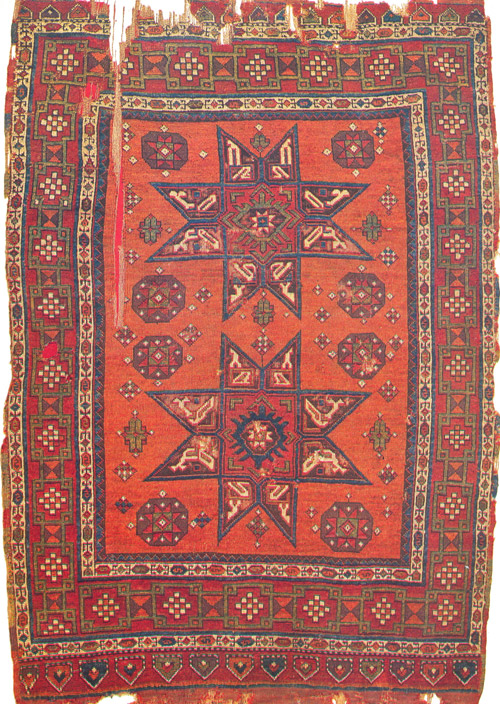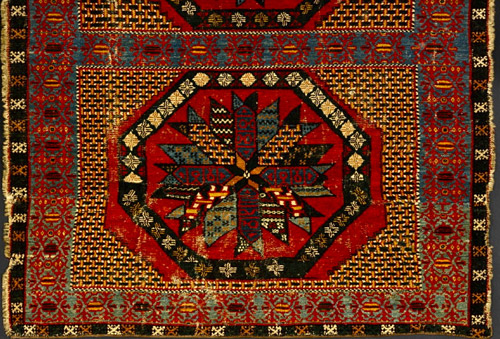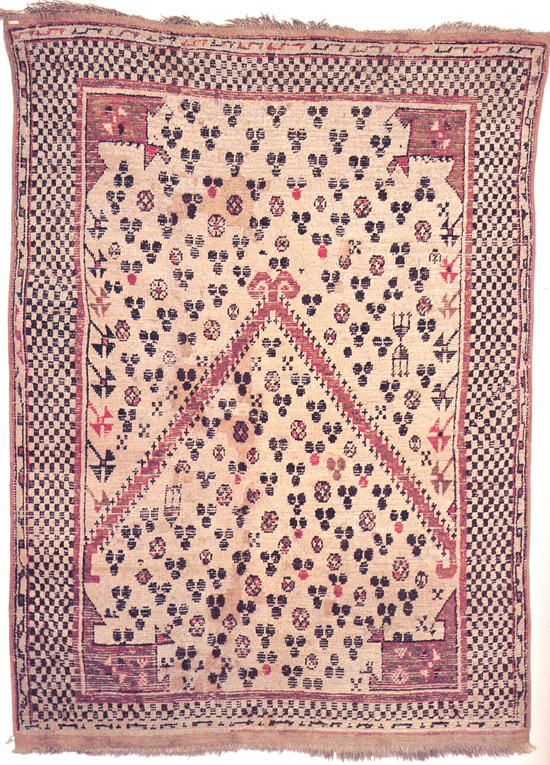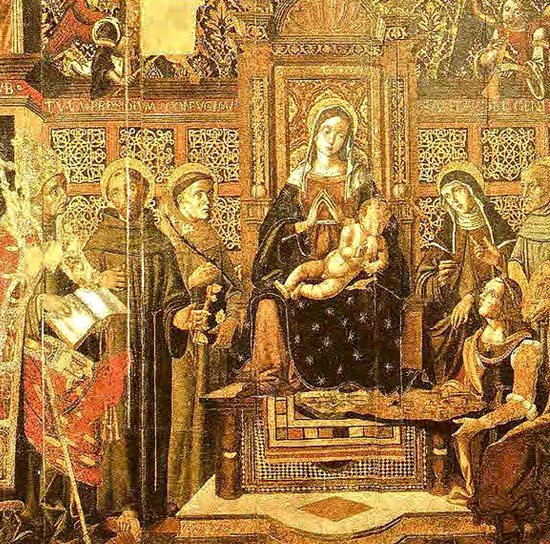Hi Filiberto,
You are right, border- or field motifs based on a combination of multicolored little squares can be found in (very few) nineteenth century Caucasian rugs like your Kazak or a couple of Karatchoph or Erivan rugs.
A similar combination is part of the border motif of the Anatolian rug below (FIG 1: Konya, eighteenth century).

The Talish border sometimes display a cross pattern left in negative between four little squares.
But, as you write, it would indeed be difficult to see these rugs as being an evolution of the fifteenth century carpet featured in the painting by the Master of Schottenaltar.
Dimand does mention a chessboard field motif in large Spanish Holbein carpets (enclosing their trademark central octagons), but at least in the examples I am aware of, it rather looks like a chain-mail motif to me.
(FIG 2: Alcaraz, fifteenth century, V&A London).

The border of the chintamani rug below (FIG 3: Anatolia, seventeenth century, M.A.A. Budapest) brings us perhaps a little closer to our target.

There is also a painting by A. Solario (FIG 4: ca.1470, Virgin and Child, Atri ), which features a small, very basic rug with prominent squares which IMHO could have come from a source of inspiration similar to the Master’s rug.

By the way, I find it very strange that a simple motif like the cross would be so rarely used in rugs or in kilims.
Too simple and easy to weave for a proud weaver perhaps? Religious taboo? Chi lo sa?

Best regards.
Pierre